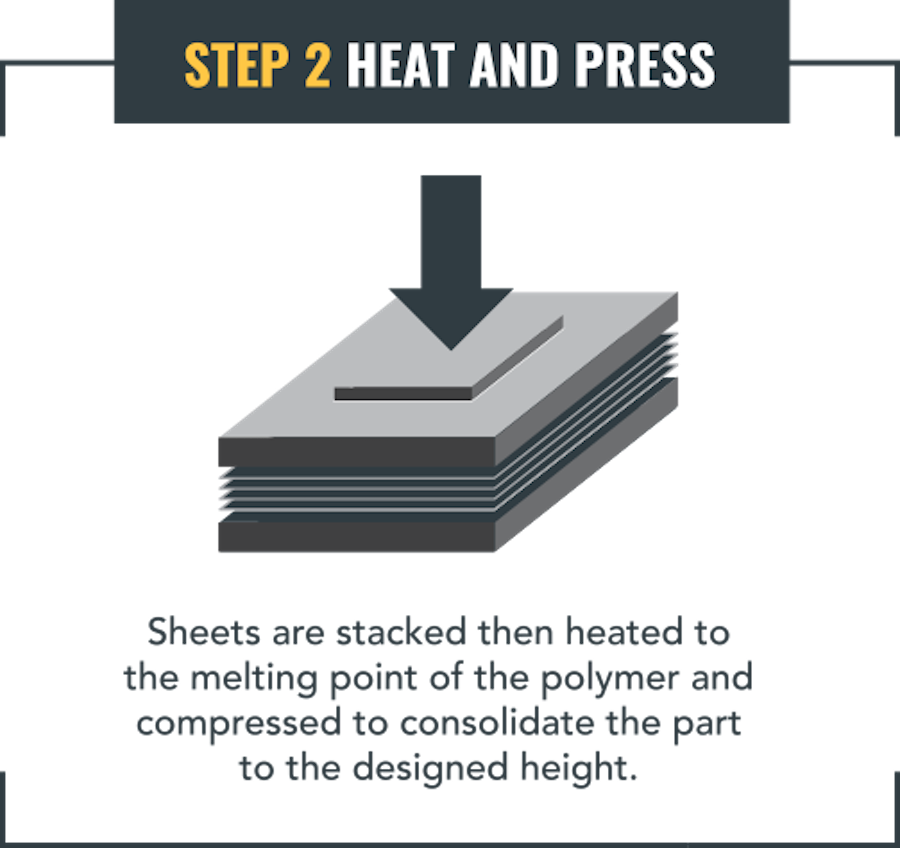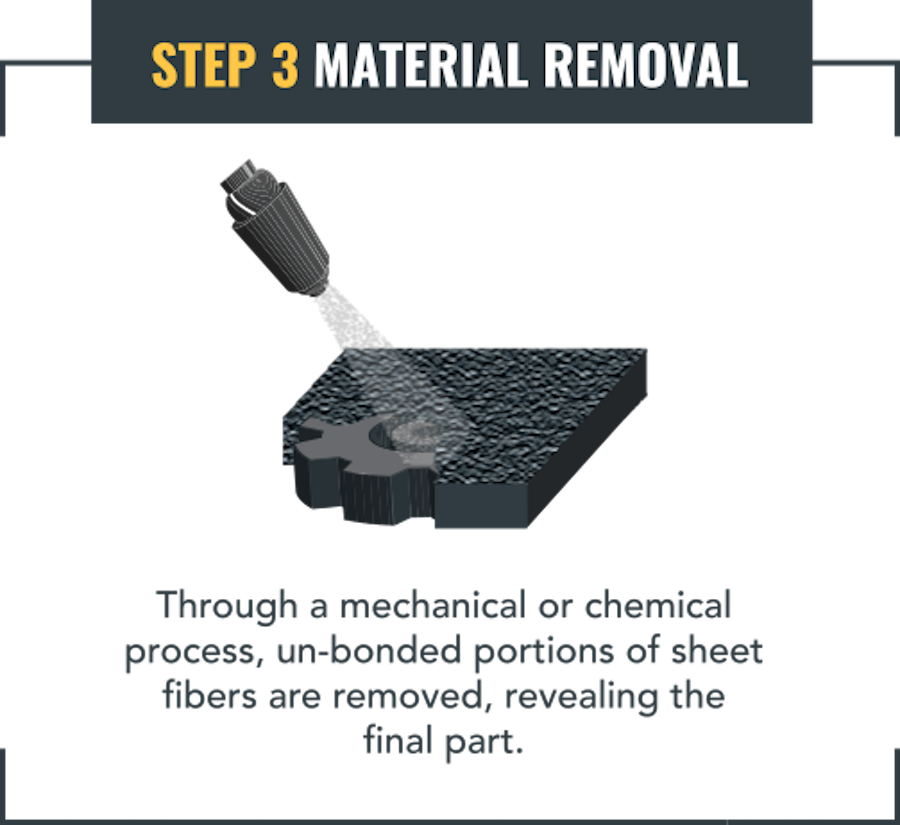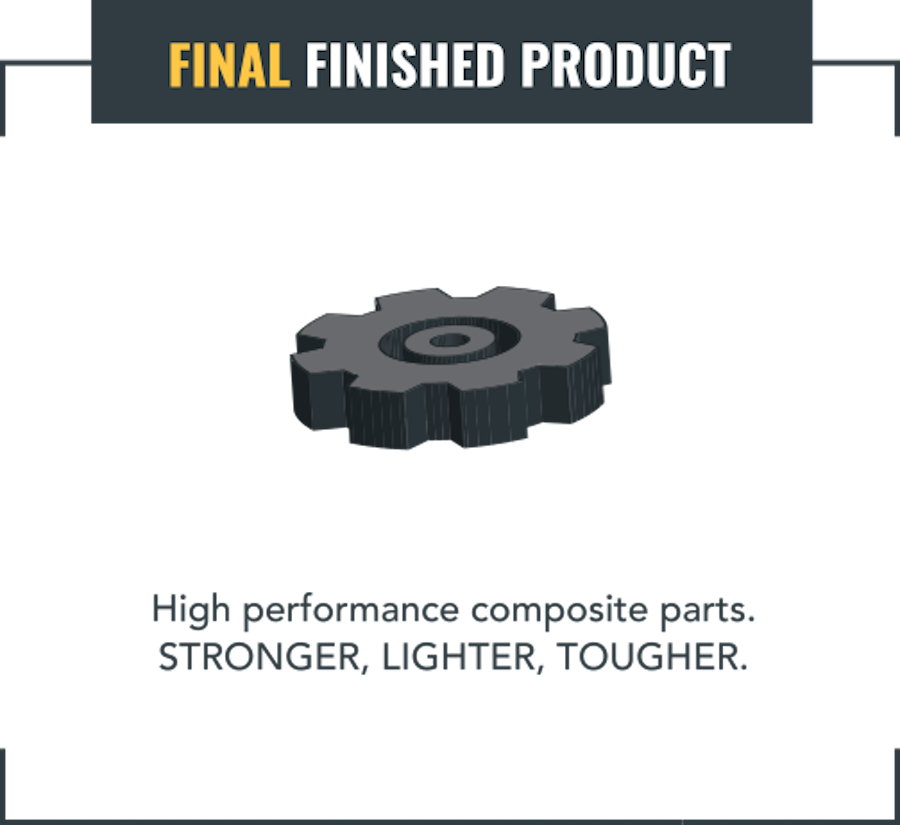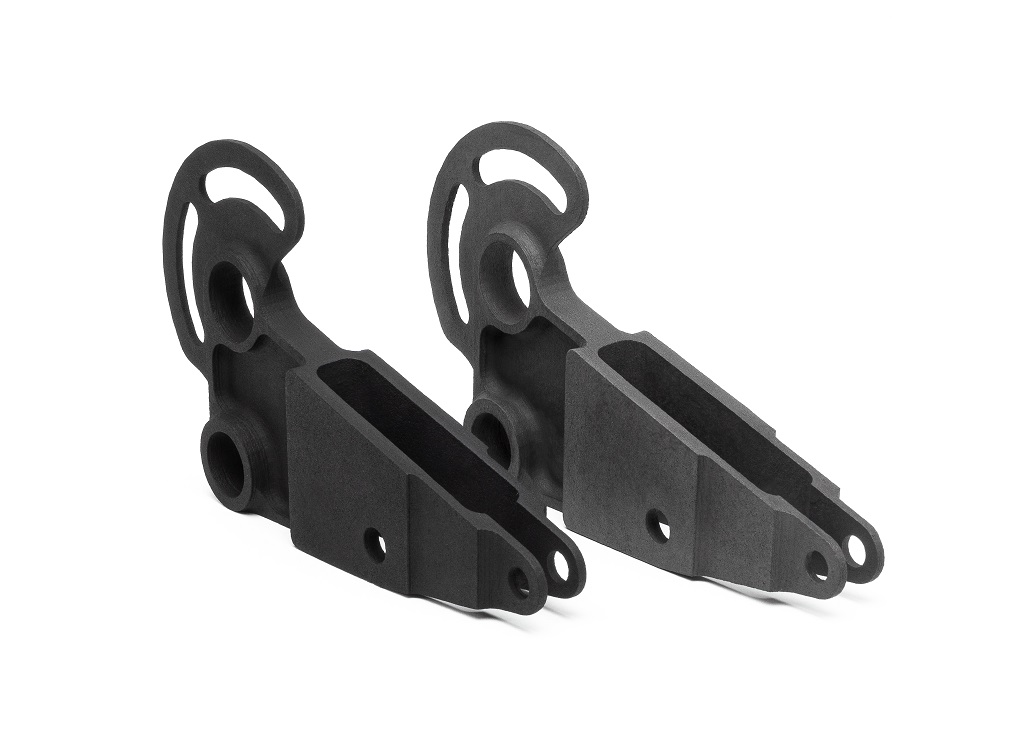
Impossible Objects has partnered with Ricoh 3D to offer strong, lightweight 3D printed composite parts to European customers.
CBAM
Composite-based additive manufacturing (CBAM) is Illinois-based Impossible Objects’ claim to composite 3D printing fame. The process is an intriguing sheet-based 3D printing technology using the company’s CBAM-2 system.
CBAM works in four basic steps, starting with the most complex: the actual 3D printing:
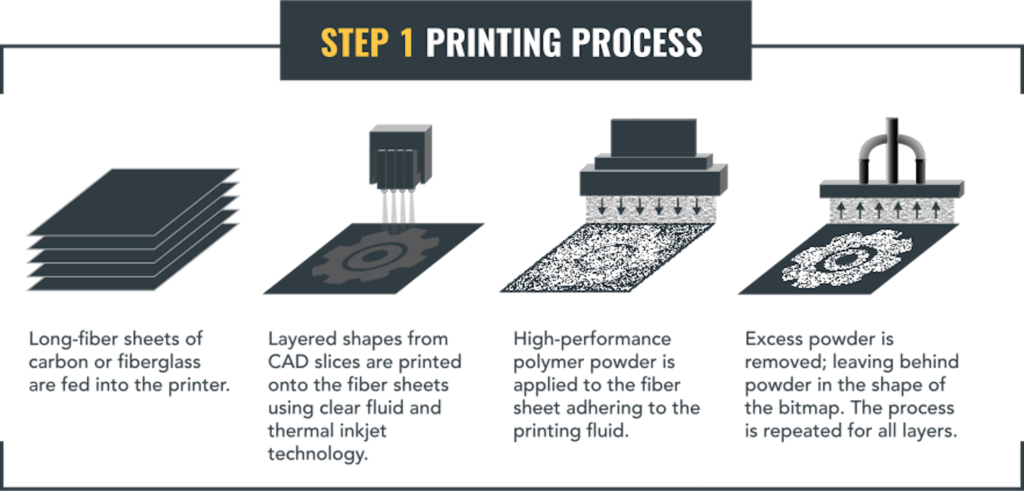
Here, the company’s graphic explains:
- Long-fiber sheets of carbon or fiberglass are fed into the printer.
- Layered shapes from CAD slices are printed onto the fiber sheets using clear fluid and thermal inkjet technology.
- High-performance polymer powder is applied to the fiber sheet adhering to the printing fluid.
- Excess powder is removed; leaving behind powder in the shape of the bitmap. The process is repeated for all layers.
Next follow the heat and press, material removal, and finished product stages.
According to Impossible Objects, CBAM “can produce parts up to ten times faster than conventional fused deposition modeling (FDM) 3D printing.” The company adds that:
“The CBAM process can create strong and resilient fine or flat parts, which is important for applications like drones; these have been impossible with FDM and FFF technologies due to the short, chopped fiber formation and lamination between layers, which cause parts to fall apart under force.”
We’ve seen these high-strength parts several times over the years, most recently at RAPID + TCT two years ago when Impossible Objects introduced the CBAM-2 as well as a funding round and materials partnership with BASF. The parts are, indeed, quite good.
Impossible Objects x Ricoh 3D
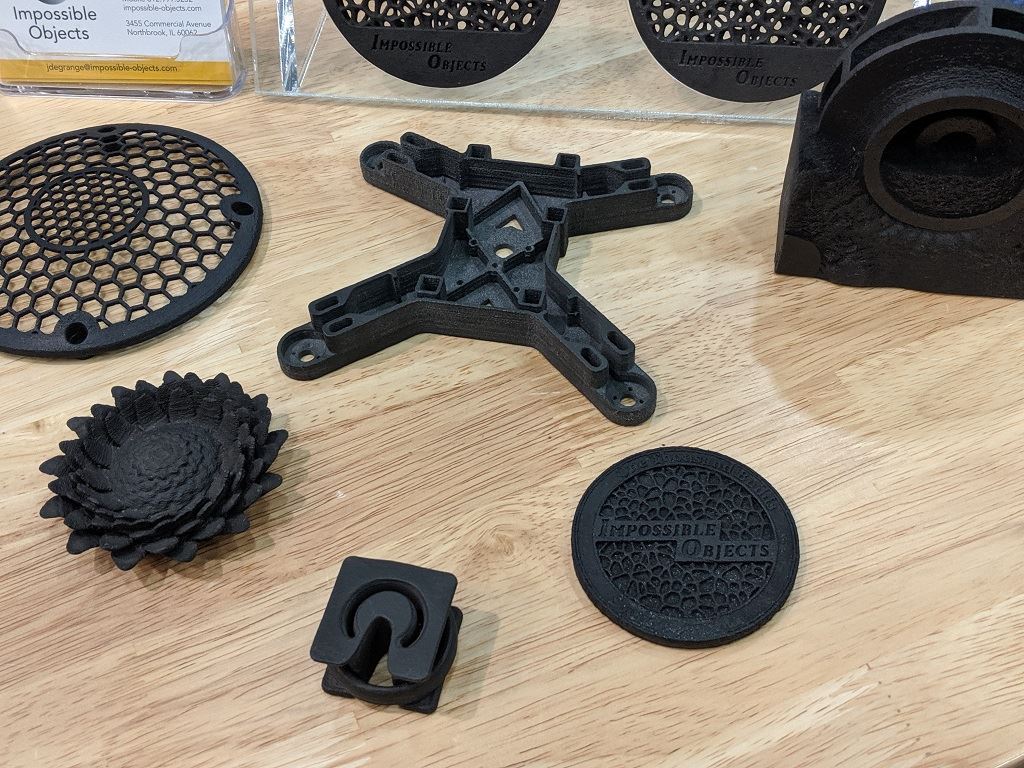
Now those parts will be available overseas, offering new 3D printing options for applications like “drones, aircraft, automobiles, athletic gear and more.”
Available via Ricoh 3D, the new availability opens up European access to parts made from Carbon Fiber PEEK and Carbon Fiber PA12 — available immediately.
For its part, Ricoh 3D is the additive manufacturing-focused European arm of Japan-based Ricoh. Late last year, Ricoh 3D introduced its revamped Centre of Excellence showroom following an investment of more than £1 million.
Ricoh 3D is an interesting enterprise; we caught up with them last spring as Additive Manufacturing & Molding Engineering Manager Mark Dickin said that Ricoh 3D would be taking control of its own 3D printing destiny.
In today’s announcement with Impossible Objects, Dickin explains:
“Composites are set to be an area of huge growth in additive manufacturing in the coming years. These new materials will change the game across a number of industries. Impossible Objects’ CBAM process is nothing short of a revolution in the way composites are manufactured, so we are proud to be working with the company to be at the forefront of the European movement.”
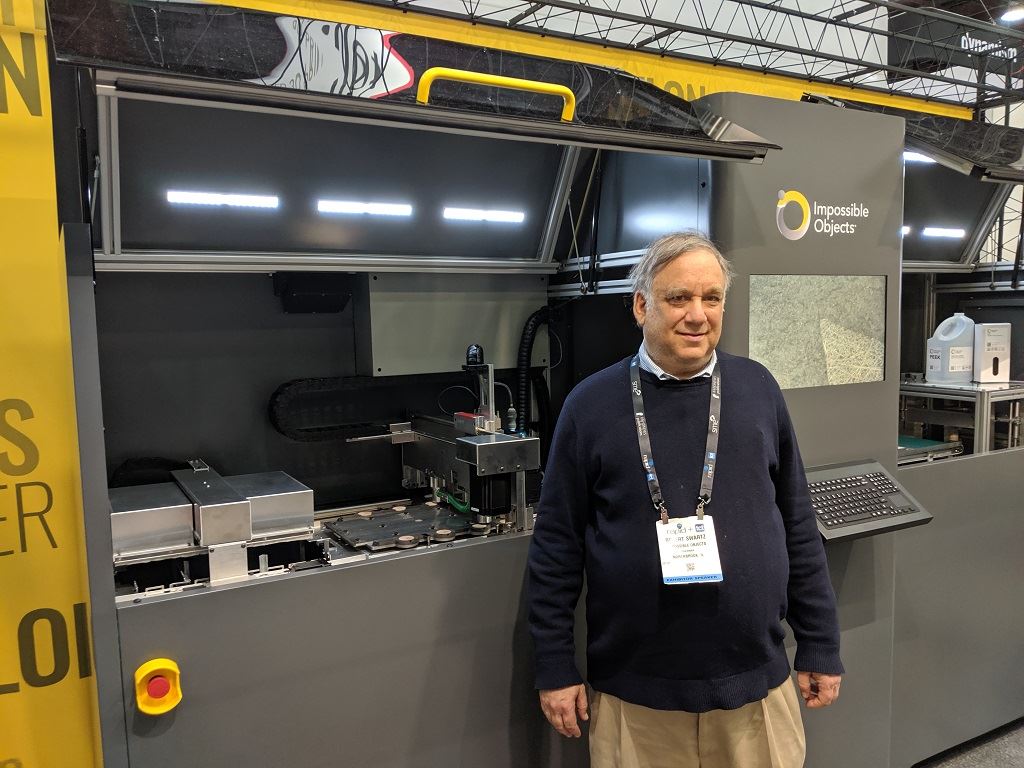
Impossible Objects Chairman and Founder Robert Swartz adds:
“Our CBAM process represents a significant leap forward in 3D printing, with faster speeds, better material properties and wider material selection. Fortune 100 companies, government agencies, and more have already put it to work to create everything from car and aircraft parts to athletic gear. By collaborating with the team at Ricoh 3D who recognizes the transformative potential of additive manufacturing, together we will bring these competitive advantages to more organizations across Europe.”
It’s exciting to hear this announcement, as Impossible Objects’ CBAM approach is one to keep an eye on, especially with higher-strength 3D printing only growing in demand.
Via Impossible Objects and Ricoh 3D

